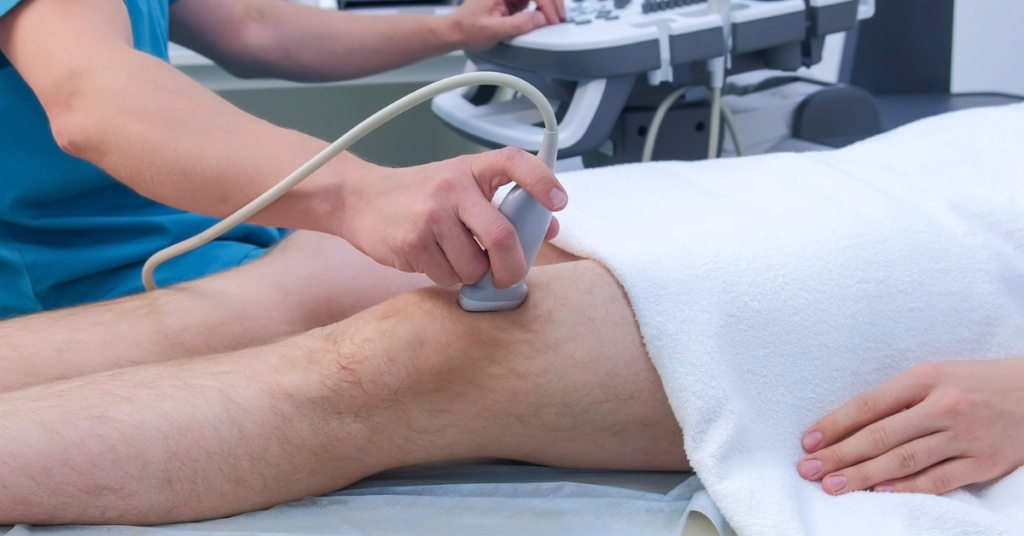Peripheral Artery Disease (PAD) is a condition that occurs when arteries supplying organs and limbs are blocked or restricted by plaque. A condition most often diagnosed in those over the age of fifty, PAD currently affects over 6.5 million people in the United States alone.
Because the plaque buildup associated with PAD can restrict the flow of blood to an affected person’s limbs or organs, this condition has the potential to cause severe complications if left untreated and can even result in tissue death resulting in limb amputation.
While we continue to learn about Peripheral Artery Disease with each passing year, there are still many myths surrounding this condition. Today, we’re going to take a closer look at six of the most common myths surrounding PAD so that you can learn the truth about this fascinating disease.
Myth #1 – The symptoms of PAD are always consistent and well-defined
Despite being a fairly common ailment, Peripheral Artery Disease (PAD) is often overlooked and misdiagnosed due to the myth that its symptoms are always consistent and well-defined. In reality, symptoms can be difficult to spot in the early stages because they vary from person to person.
Common symptoms of PAD include leg pain and cramping when walking or exercising (claudication), as well as skin discoloration in the lower legs. However, other symptoms such as coldness of the lower legs and feet, changes in hair growth, sores that heal slowly or don’t heal at all, and non-healing ulcers can also be present. As such, it is important not to self-diagnose and take advantage of free health screenings if symptoms seem suspicious – early diagnosis is key to managing symptoms of PAD!
To determine whether or not you are at risk for PAD, take the quiz!
Myth #2 – PAD only affects the legs and feet
Ignorance is not bliss when it comes to Peripheral Artery Disease (PAD). Many people falsely believe that the symptoms they experience are unrelated to PAD if their legs aren’t involved – but the truth is that this condition can occur in any artery, including those delivering blood flow to vital organs such as your heart and brain.
As fat deposits build up inside these arteries, important areas like your pelvis, kidneys, and intestines may suffer from poor circulation – as well as other parts of the body. And while the feet and legs are by far the most commonly affected areas of the body, PAD can be experienced virtually anywhere in your peripheral vascular system.
Myth #3 – PAD is not life-threatening
The truth is that Peripheral Artery Disease (PAD) is a potentially life-threatening condition that should not be taken lightly. Without proper diagnosis and treatment, this vascular disease can lead to reduced blood flow in limbs and organs, which may cause tissue death leading to amputation. Fortunately, with swift intervention, those suffering from PAD can continue living happy lives with no long-term damage!
Myth #4 – PAD is a man’s disease
Did you know that women are just as likely, if not more so, to suffer from Peripheral Artery Disease than men? This surprising reality was discovered in a 2014 study that showed us the sheer number of people affected by PAD. Furthermore, these vulnerable individuals were found to experience faster rates of functional decline compared to their male counterparts too! As our population continues its aging process, this trend is only expected to intensify – putting even further significance on today’s research into controlling and preventing PAD.
Myth #5: Only overweight people have PAD
Though weight can be a contributing factor to Peripheral Artery Disease (PAD), it is certainly not the only risk factor or even a primary! In fact, smoking is the number one risk factor, affecting up to 80% of all patients with PAD. Additionally, 20-30% of all patients with PAD suffer from diabetes – a condition which not only increases your chances of having the disease but exacerbates its symptoms.
Myth #6: PAD can only be treated with invasive surgery
Treating Peripheral Arterial Disease (PAD) doesn’t always have to mean invasive surgery! In fact, simple lifestyle changes like quitting smoking and maintaining a healthy diet and weight can make all the difference when PAD is caught early. If further treatments are necessary, our experienced doctors may suggest, instead, a minimally-invasive treatment option to save you from undergoing major surgery.
Some of the most common minimally-invasive treatment options used for PAD include the following:
Balloon Angioplasty – A procedure in which a specialized catheter with an elongated balloon on its tip inflates to remodel the blockage in the artery.
Atherectomy – An advanced technological procedure that removes plaque buildup in the arteries by using specialized catheters that have a laser or grinding functionality.
Stenting – Often utilized as a last resort if Angioplasty or Atherectomy is unsuccessful, this procedure involves placing a stent (a small mesh tube) to keep the vessel open permanently.
As you can see, there are many myths surrounding the topic of Peripheral Artery Disease – not all of them are true. By understanding the risk factors, causes, and treatment options for this common condition, you can keep yourself and your loved ones healthy for years to come. Of course, the best way to ensure you’re taking care of your vascular health is by routinely checking in with a doctor or by taking our quiz to rule out your risk for PAD. Stay healthy!




